We all love Anne, Charlotte and Emily Brontë, and thankfully there are many good, or at least good intentioned, biographies that expand our knowledge of them. There are many others, however, who had a huge impact on the Brontë sisters about whom relatively little is known. That’s why we should always remember the influence of the servants who were around the children day by day, such as the Garrs sisters.
Nancy Garrs joined the Brontë family in July 1816, at the age of 12 or 13, arriving at Thornton Parsonage to help the day to day running of the building which had just seen the addition of baby Charlotte. By August 1818 two further Brontë children, Patrick Branwell and Emily Jane, had arrived and a further nurse was taken on. Nancy must have impressed in her role, because her sister Sarah, aged 12 was chosen. Both remained in the service of the Brontë family until 1824. That much is known, but little else. However, many mists are clearing and once hidden figures are coming again into the light. Trawling through the newspaper archives recently, I found many articles about, and interviews with, Nancy. They are revelatory, fascinating, and give first hand accounts of Patrick and Branwell that show them rather differently to how they’re often portrayed, and we also see yet another now forgotten tale of Charlotte Brontë’s generosity. So, let’s no longer look through a glass darkly but instead find out more about Nancy Garrs.
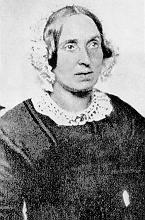
One other thing widely known about Nancy Garrs is that she attended the Bradford School of Industry, a school that trained girls from poorer families to become domestic servants. It may be thought, then, that she was from a very poor background, but in fact previously hidden 19th century reports show that this isn’t so – and, indeed, that she wasn’t called Nancy Garrs at all.
Nancy and Sarah were children of Richard Degarrs, who owned a shoemaker’s shop in Westgate, Bradford. Richard was himself the son of a French man, and the Bradford locals had trouble pronouncing his surname, so he became known as Dicky Garrs instead. Therefore, like a mirror image of the Bruntys becoming the Brontës, the cordwainer’s daughter Nancy Degarrs became Nancy Garrs.
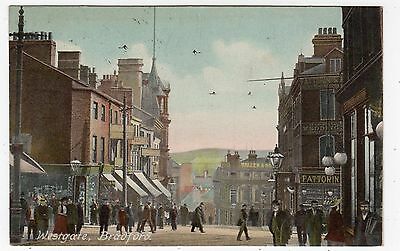
Nancy married twice, her first marriage was to a Pat Wainwright who was a foreman, and after his death she became Nancy Malone after marrying John Malone who worked in a wool warehouse in Bradford’s cheapside. After his death she lived firstly at Cheapside, but she was rarely lonely as she was often visited by Brontë lovers who wanted to hear first hand tales of the family she had known and still loved. In a way, the Brontës never left Nancy, and she had a number of possessions relating to them. Prized chiefly among them was a letter from Patrick Brontë that she showed to a reporter from the Leeds Mercury in the 1870s:
‘Continuing her pleasant chat, Nancy then brought out her Brontë relics. First she took down from the wall and laid before me a letter, framed and glazed like a picture. It was dated 1857, and at the foot was the signature of Mr. Brontë. In Mrs. Gaskell’s book, Nancy and her sister are spoken of as wasteful. In her next conversation with Mr. Brontë, Nancy complained of the charge, whereupon the kindly old gentleman comforted his servant’s heart by writing the document which she had suspended against the wall for the confusion of all gainsayers. The letter runs as follows:—” Haworth, August, 1857. I leave to state to all whom it may concern that Nancy and Sarah Garrs, during the time they were in service, were kind to my children, honest, and not wasteful, but sufficiently careful in regard to food and all other things entrusted to their care. P. Brontë, A.B., Incumbent of Haworth.”‘
After John Malone’s death, Nancy found herself in increasing difficulty financially, and she spent the last years of her life at the Bradford Workhouse – that’s it at the top of this post. Workhouses could be a terrible place for those who have been abandoned by society or who have no means of supporting themselves, a place to be punished for being poor, a place to be hidden away and to die. Her fate was discovered and on December 12th 1884 it led the Pall Mall Gazette of London to contend:
“A few months ago there was received into the Bradford Workhouse an old woman who, for the sake of the precious memories she cherishes, and the associations with which she is the last remaining link, ought to have been saved from such a fate. Her name is Nancy Wainwright, and her claim to public sympathy rests on the fact that she was the nurse of Charlotte Brontë, her sisters Emily and Anne, and the intractable Branwell.”
This story was noticed worldwide, and the New York Times ran a similar article saying that a fund should be raised for her. In fact, Nancy Malone as she was then (although for some reason she was known by her former known of Wainwright) received a number of offers of accommodation and help, but turned them all down because she enjoyed living in the workhouse. Nancy’s workhouse experience was not the same as most others met; she was given her own room, a comfortable life, good food and treated deferentially because of her Brontë connection, and was allowed to receive visitors who still came to see the former Brontë servant.
Her death was reported in a fulsome obituary in the Bradford Daily Telegraph of 27th March 1886:
“This morning Mrs Nancy Malone, better known as Nancy Wainwright, died at the Bradford Workhouse at twenty minutes to one o’clock. The old lady, who was in her eighty-third year, enjoyed a considerable amount of notoriety amongst admirers of the Brontë family from the fact that in her younger days she acted as nurse for Charlotte and her talented sisters, with whom for the whole of their lifetime she continued on terms of intimacy… Admirers of the Brontës, not only local but from distant parts of the country, visited her at the workhouse, and she had repeated offers of a home outside of the workhouse gates, but she declined to avail herself of them… Notwithstanding her great age she enjoyed fairly good health up to a fortnight ago, but from that period has failed rapidly. Her condition during the past few days was seen to be hopeless, and she expired peaceably and quietly at the hour named.”
The article then goes on to mention her sister Sarah who had emigrated to Crawfordsville, Iowa, and who had a son who was a doctor in the American army (Sarah died in 1899, aged 93), and that Nancy had a brother still living who was a master tradesman in Sheffield. As we shall see, he perhaps had another ambition.
The most remarkable tribute to Nancy was made two years earlier in the Pall Mall Gazette article. It is a long interview containing a delightful picture of Nancy at this time. The article is incredibly moving, not least for a description of a scene playing out in the workhouse that could have come straight from Dickens, but was in fact from real life:
“The cry of a baby drew my attention to a pale-faced woman who sat on one of the beds. I inquired about her, and was informed that she had been forced there to taste life’s bitterness because a worthless husband had deserted her for a worthless woman, leaving her to bring her child into the world within the walls of the poorhouse. The woman had been rendering return for shelter by scrubbing the floors, and now, as she pressed her infant to her breast, I sat and talked with Charlotte Brontë’s nurse. I shook the hands which had fondled and caressed the Brontë children in their infancy.”
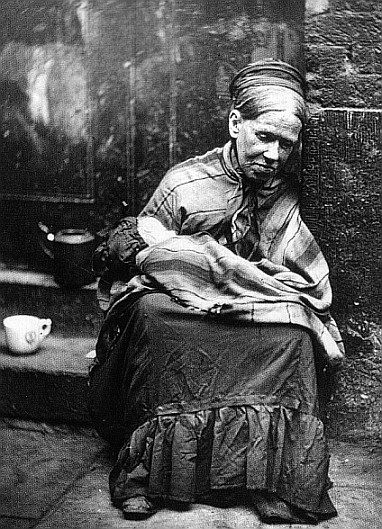
In the interview, Nancy waxes lyrical about many members of the Brontë family:
“Nancy never tires of talking of the Brontës. The remembrance of them is as sunshine to her declining years… She has many stories to relate of the kindly disposition of Charlotte, the wilfulness of Branwell, the hot temper of Emily, and the tenderness of Anne.”
The article is long and fascinating with too many tales to relate here, but I am happy to send a PDF copy of it to anyone who emails me as I think it’s an article that deserves to be remembered. Let’s take a look at some highlights.
On Charlotte, Nancy says:
“When distinguished visitors came, it was always a matter of difficulty to stop Charlotte from silently-stealing into the drawing room, and when they had gone she would criticise their appearance, manner and speech with such cleverness that her father would often laugh heartily in spite of the utmost efforts to restrain himself.”
On Branwell, we hear:
‘”Branwell was a good lad enough until the serpent beguiled him”, and she thinks he has been “made out to be a good deal worse than he really was.” Nancy could “manage him” better than any one else when his fits of fury were upon him, and Branwell seemed to have a real affection for his old nurse. He often wanted to paint her portrait, but she declined on the score that she did not consider herself good looking enough.”’
Nancy’s affection for Patrick is clear:
“A kinder man than Mr. Brontë never drew breath.”
In an earlier interview, Nancy had also said “Mr. Brontë was one of the kindest husbands I ever knew, except my own.”
Nancy was the chief mourner at Patrick’s funeral, alongside Arthur Bell Nicholls, and was by his side as he died. The Pall Mall Gazette says that the reverend presented her with a final gift, a roasting jack, on his deathbed.
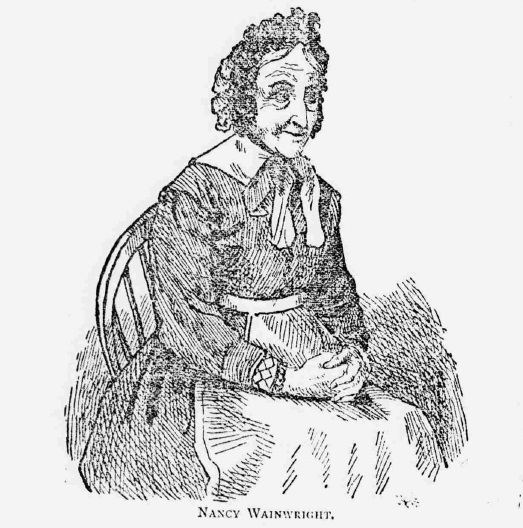
We can now see a rounder picture of Nancy Garrs, or I should say Nancy Degarrs. From a mercantile family of French origin, she was an intensely kind, loving and fiercely loyal woman. There are doubtless many more contemporary tales of Nancy and others in the Brontë story, and I’ll keep looking for them. We’ll close by turning to a man mentioned earlier, Nancy’s brother in Sheffield. You may recall an earlier post that brought to light Charlotte’s generosity to a man who had no boots. Well, Charlotte is at it again – it seems that she was quite a philanthropist, even if she was also characteristically honest with people too. Sorry, Charlotte, whilst this story has remained hidden within for over 130 years within pages of the Pall Mall Gazette that have long since been unturned. I’m going to reveal it once more and leave you all today with the story of Charlotte Brontë, the poet and the Earl of Carlisle!:
‘Nancy tells a story which shows Charlotte’s goodness of heart in a strong light. Nancy had a brother who had literary aspirations. He wrote some poems, and went over to Haworth to to submit them to the author of ‘Jane Eyre’. This was in the summer of 1853, when she was at the height of her fame. Immediately she saw the young man she said, “Why, you are Nancy’s brother”, although she had never seen him before. She read his poems, heard all his plans, and after telling him how she and her sisters had published poems at a loss, did her best to dissuade him from this project. The next day she sent him a letter, again urging him not to publish. A few weeks later, the young man received a letter bearing the crest of the Earl of Carlisle, an earnest patron of literature. The letter contained an enclosure of £5. The connection between the visit of Nancy’s brother to Haworth and that letter was not far to seek.’
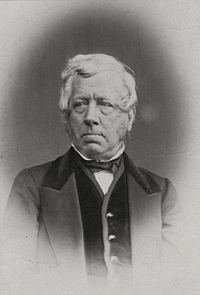
According to the Measuring Worth website that £5 has a purely inflationary value of £500 today but an actual income equivalent value of £5,317. A very generous gesture from the Earl (by the way if any modern Earls want to repeat the gesture I can let you have my address), a typically kind gesture from Charlotte, and another enlightening revelation from Nancy Garrs. Have a good day, and let’s all try to spread a little kindness ourselves.
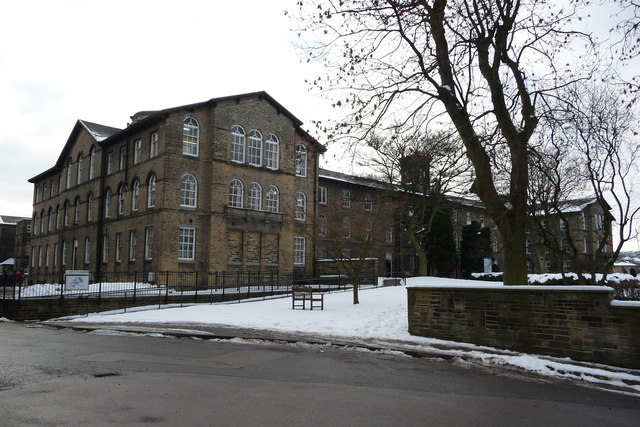
Fascinating! Thoroughly enjoying your blog! Thank you.
Aw, thank you so much Ann!
Once again, Nick, thank you for a great read, I always look forward to your email on Sundays. On the back of your kind offer whenever you get a chance I’d love a copy of the article you referenced from in the Nancy Garrs article.
Happy Sunday ,
All good wishes,
Pauline.
Thank you so much Pauline! Happy Sunday to you too, I’m just about to email the article over to you! Thanks again, Nick.
Great background story on their servants…I’m sure the tales they could tell of the family would fill many books! I would love to receive a copy of the full PDF article.
Thanks Eric, I will email it to you!
If all servants could tell you what happened behind the scenes, I’m sure we would have a very different views of history.
I too would love a copy of the pdf
This is a remarkable story and its quite a coincidence that I have been researching the very same articles in the last eight weeks. Nancy’s dying wish was that she didn’t want to be buried in a paupers grave. It turned out that she wasnt and in fact she was given a descent burial at Undercliffe Cemetery. But there is a fascinating story behind this and it will be told on September 7th when the volunteers at Undercliffe will be giving a tour of the cemetery.
Thanks Steve, and that really is a coincidence! I’m delighted to hear that Nancy was given a decent burial in the beautiful Undercliffe Cemetery! Thanks for letting me know about that event too, I will keep the date free and definitely come along to it!
Really interesting, thanks Nick. It pleases me to see evidence of Patrick being a decent sort as I seem to be forever having to defend him, primarily in my case of course for his sending four of his daughters to Carus Wilson’s school! (which then leads me on to having to defend CW!).
I’d really appreciate your sending me the full article, thank you!
Sandra
As friends of the Firth”s of Thornton,with John Fifth telling Patrick about the post at Haworth,as well as Doctor Firth being Godfather to some of the Bronte’s.I wonder if you know that when the Bronte family spent there last night ever in Thornton in the Firth family house,where they set off to Hawoth the next day in their packed carts which has been left outside the Firth’s houses overnight – on Lower kipping Lane The Bronte’s left baby Anne at the houses there in Thornton with John Fith and his daughter Elizabeth..Anne was in fact Thornton’s ‘ Last Bronte.’as they had moved to Haworth yet still had her Christened in Thornton.Patrick Bronte walked from Haworth to the Firth houses to ask Elizabeth Firth to marry him,which left a strain on the wonderful friendship the Bronte sisters had with Elizabeth because Elizabeth felt uncomfortably with this.Also even though I sent research into Haworth Personage Bronte Society as to why no writes/scholars mention that in Charlotte Brontes, Jane Eyre,she goes to the George pub/coaching house in the novel ,which is autobiographical…and in the pub ,the character Jane- asks ‘how far is Thornfield’ which by the answer being 6 miles away…which is the real distance from Haworth to Thornton so proves Charlotte obviously places Jane Eyre to be set in,Thornton,at Thornton Hall, ,at her own place of birth.
So interesting. Would love to read the whole article. Nancy and Sarah Degarrs were my great, great, great? aunts on my father’s side.
Thank you so much for the article on Nancy Garss/ Degarrs. I’m currently doing research for a novel set in part in the Haworth area, with fictional as well as historic characters. One scene features the bog burst of 1824.
Ah wonderful – good luck with your novel, I’d love to hear more about it.
Nancy and Sarah Garrs are two of the various characters involved in my story. I’m so glad I found the research about their lives. It helped bring the circumstances around the event of September 1824 to life when they were on the moors with their young charges.
Very interesting article.
Thank you Richard – are you related to Nancy? If so, I have some rather interesting, although tragic, information on another family member that you may be interested in?
I am Nancy Garrs great great great nephew. Her only brother Henry was my great great grandfather. In so many articles I’ve read about Nancy and her sister Sarah, the sisters are described as nurses or even tutors to the Brontë family, when they were in fact maids at Haworth Parsonage. Do contact me if you would like any further information
Hi Jonathan!
I don’t suppose you have any information about the de Garrs family tree you can share/confirm, and Nancy’s siblings? By complete coincidence I’ve happened on this wonderful write up whilst researching my family tree – I myself from Barnsley, my name is De Garr – and I believe Nancy is the sister of Jane de Garrs (daughter of Richard) who is 4th great grandmother.
Hi Joseph,
I’m descended from Jane too, she’s my 4th great grandmother through her son William. He died in a mine accident in the UK, then his widow migrated to Australia which is where I am now.
I’d be very intrigued to know your connection too!
What a fascinating article . Where did the servants live that worked for the Bronte family ? I’d really like a copy of the article please . Julia
My ex father-in-law was Jack Garrs who was a printer from Leeds – he had six children and died in Rhodesia where the Garrs family emigrated. He had three boys and three girls but a series of incidents has resulted in my two boys and two of my grandchildren being the only ones to carry the Garrs name forward. I’d be interested to know about our relationship with the Howarth maids! especially the connection to the Heuganots
Hello
Thoroughly enjoyed your blog on Nancy and all the attendant comments.
I’m currently researching Nancy for some short stories and I’d really appreciate a copy of the pdf you mentioned.
Also came across a picture of the Industrial School in Bradford Local Studies recently.
Many thanks
Thank you Irene – I’ve just sent the pdf across to you!